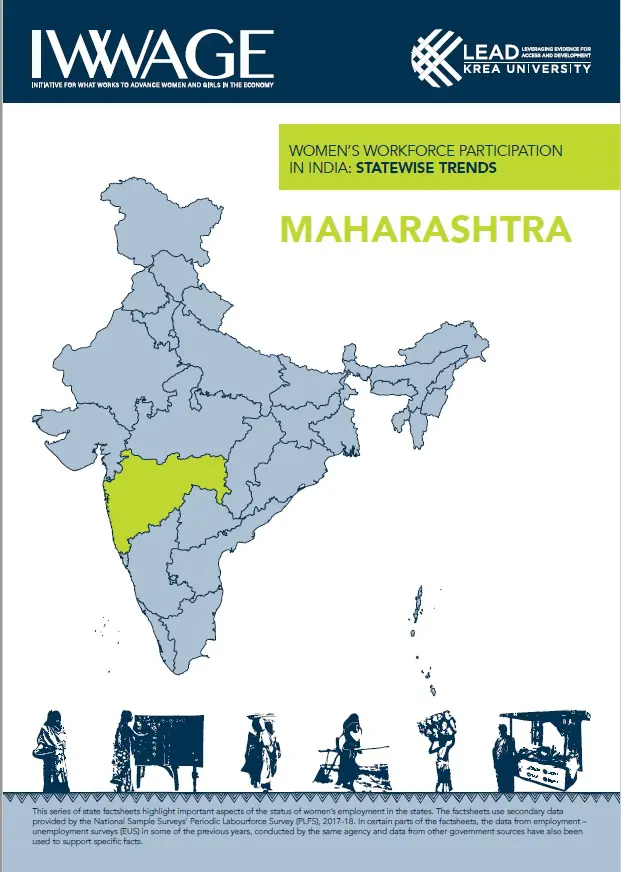Women’s labourforce participation rates (LFPR) reveals some interesting trends for Maharashtra. As per the figures from the labourforce surveys, the LFPR is significantly higher than the all-India figures, largely driven by higher than average rural employment. The state also shares a decline in self-employment and casual employment and a shift towards regular wage work for both rural and urban women. In Maharashtrathe urban areas witnessed a consistent rise in regular wage work of women since 2004-05. More than 60 per cent of women are employed as regular workers – 70 per cent of which is concentrated in the services sector such as education, health and retail. In rural areas, the share of casual workers is considerably higher at around 42 per cent, followed by 52 per cent in self-employment. The incidence of unpaid family workers among self-employed women exceed 80 per cent. While the urban areas show considerable diversity of women workers across occupations and sectors, women in the rural areas remain concentrated as manual workers in agriculture or within construction work.
Initiative for What Works to Advance Women and Girls in the Economy (IWWAGE), has developed a series of factsheet that highlight the important aspects of women’s employment across the states in India. It uses secondary data provided by the National Sample Surveys’ Periodic Labour Force Survey (PLFS), 2017-18, and the employment-unemployment surveys (EUS) as well as data from other sources to support state specific analysis. The Maharashtra factsheet is part of this series, and can be accessed here.
